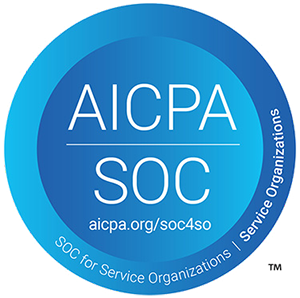Education is at a pivotal moment, where traditional methods are being reimagined through the lens of digital innovation. Moving exams online is no longer an option but a strategic imperative for institutions striving to stay relevant in an increasingly connected world.
To dive deeper into the specifics of moving exams online, including actionable strategies and in-depth insights, read our complete guide on: Moving Exams Online
So, how can institutions ensure this transition is smooth, secure, and scalable? Let’s explore the key steps to successfully moving exams online, empowering institutions to meet modern challenges while maintaining the integrity of their assessments.
Why Move Exams Online?
The shift to online exams is driven by the need for flexibility, scalability, and continuity in education. Institutions worldwide are embracing digital assessments to meet the evolving demands of students and educators. Here’s why:
- Accessibility: Students can take exams from anywhere, removing logistical barriers and ensuring equal opportunities for all, regardless of location.
- Efficiency: Automation reduces administrative workloads, saving time and resources while streamlining processes like grading and reporting.
- Scalability: Online exams can accommodate large volumes of test-takers simultaneously, eliminating the need for physical space constraints.
- Enhanced Security: Advanced digital tools, such as AI-powered proctoring and identity verification, help maintain the integrity of exams.
Online exams are not just a response to temporary disruptions; they are a sustainable solution for modern education systems. By leveraging the right technology and practices, institutions can transform assessments into a seamless and innovative experience.
What are the Key Steps to Transitioning to Online Exams?
The transition to online exams requires a strategic approach to address the needs of students, educators, and administrators. Here are the essential steps to ensure success:
1. Choose the Right Platform
The foundation of a successful transition lies in selecting a robust online examination platform. A suitable platform should provide:
- Real-time Proctoring: Features like live monitoring, automated proctoring, and activity tracking to uphold exam integrity.
- Integration Capabilities: Seamless integration with existing learning management systems (LMS) for a cohesive experience.
- Secure Data Management: End-to-end encryption and compliance with data protection regulations to safeguard sensitive information.
Evaluate platforms based on their ability to meet your institution’s unique requirements, including scalability, user-friendliness, and technical support.
2. Design Exams for the Digital Medium
Online exams are inherently different from traditional paper-based tests. To optimize the digital assessment experience:
- Incorporate diverse question types, such as multiple-choice, short answers, essays, or video responses, to assess various competencies.
- Use multimedia elements like images, graphs, and videos to make questions more engaging and contextually relevant.
- Adjust time limits and navigation options to suit the online format, ensuring a fair and manageable experience for test-takers.
By designing exams specifically for the digital medium, institutions can create assessments that are both effective and adaptable.
3. Ensure Security and Integrity
Maintaining the credibility of online exams is crucial. Implement advanced security measures to address potential risks:
- Remote Proctoring: Use tools that monitor behavior, flag suspicious activities, and provide real-time alerts.
- Identity Verification: Require students to verify their identity through methods like facial recognition or government-issued IDs.
- Activity Monitoring: Track keystrokes, screen activity, and browser usage to deter cheating.
These measures help ensure that online exams are as trustworthy as their in-person counterparts.
4. Prepare Students and Educators
A smooth transition depends on the readiness of all stakeholders. Clear communication and training are key:
- Provide detailed guides and tutorials on how to use the online platform effectively.
- Conduct training sessions for educators to familiarize them with proctoring tools, question design, and analytics features.
- Offer students access to mock exams that replicate the actual testing environment, reducing anxiety and building confidence.
Empowering students and educators with the right knowledge and resources fosters a positive transition experience.
5. Test the System
Before rolling out online exams, conduct trial runs to identify and address potential issues:
- Test the platform’s functionality, including proctoring, navigation, and submission processes.
- Simulate various scenarios, such as internet outages or login errors, to develop contingency plans.
- Gather feedback from participants to make necessary adjustments.
Thorough testing ensures that exam day proceeds without disruptions, instilling confidence in the process.
What are the Challenges and Solutions?
While the benefits of online exams are compelling, the transition is not without challenges. Institutions must proactively address these issues to ensure a seamless experience:
1. Technical Issues
Technical glitches, such as system crashes or connectivity problems, can disrupt exams. Solutions include:
- Regular system updates to enhance performance and security.
- Reliable IT support available during exams to address issues promptly.
- Clear guidelines for students on troubleshooting common problems.
2. User Adaptation
Not all users may be comfortable with online exams initially. Comprehensive training and support can bridge this gap:
- Provide step-by-step instructions and video tutorials for using the platform.
- Offer helplines or chat support for real-time assistance.
- Encourage practice exams to build familiarity and confidence.
3. Cheating Concerns
Concerns about cheating are prevalent in online exams. Advanced tools can help safeguard assessments:
- AI-based proctoring to detect and flag suspicious behavior.
- Biometric authentication for secure identity verification.
- Randomized question banks and time limits to deter dishonest practices.
By addressing these challenges proactively, institutions can create a reliable and fair online exam system.
What is the Future of Online Exams?
As educational institutions continue to embrace digital transformation, online exams are poised to become the norm rather than the exception. This transition represents a unique opportunity to enhance the learning experience, making assessments more accessible, scalable, and secure.
With the right strategy and tools, institutions can not only meet the demands of modern education but also set new standards for excellence. By investing in robust platforms, innovative design, and comprehensive training, the shift to online exams can be a catalyst for positive change.







Leave a Reply